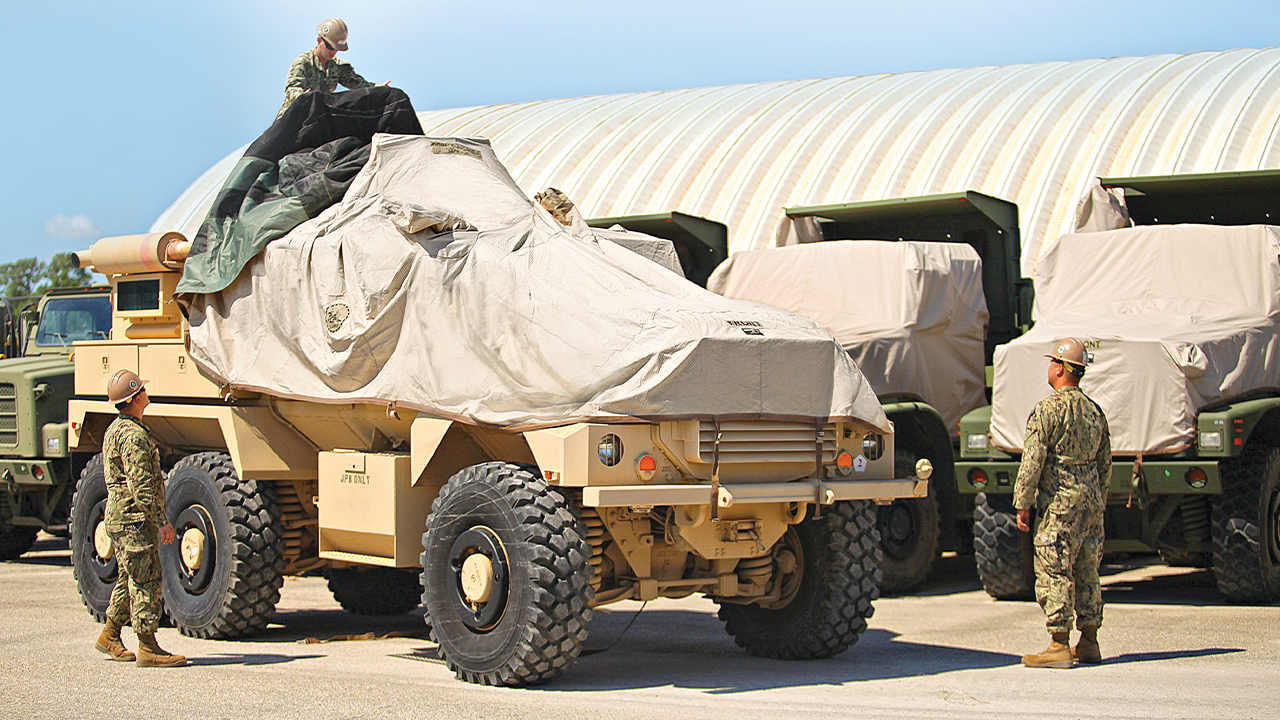Some would say a military helicopter’s most important capability is lethality, while others might choose lift capacity or survivability. When you ask AI, the answer is versatility.
Read MoreWhen your base is located in the tropics, corrosion prevention is a strategic imperative - a critical part of maintaining readiness and mission capability.
Read MoreThe key to Cocoon’s breakthrough in protective cover technology is a membrane that’s around 70 microns thick.
Read MoreThere’s no way to prevent falling snow (even in New Orleans!) or freezing rain. In fact, the elements are relentless. Your assets are under attack 24/7/365, and every day they go unprotected, the costs of corrosion increase.
Read MoreMilitary aircraft include far more technology than ever before. These new technologies have greatly enhanced the capability of military assets, but have also made them more susceptible to corrosion.
Read MoreMilitary vehicles include far more technology than ever before. These new technologies have greatly enhanced the capability of military assets, but have also made them more susceptible to corrosion - which puts their readiness at greater risk.
Read MoreIt's ironic that something microscopic makes such a huge difference to protecting your critical assets.
Read MoreThere's a lot more to an advanced cover than meets the eye.
Read MoreAs the old saying goes, “An ounce of prevention is worth a pound of cure.” Or in this case, a few minutes spent putting on protective covers can save hundreds of maintenance man-hours and greatly reduce the risk of Non-Available Days (NADs).
Read MoreWhen Army Aviation & Missile Command put forward the challenge to develop a more effective protective cover in 2007, we had 30 years of corrosion-prevention experience, but we didn’t have a protective cover product.
Read MoreAn armored vehicle is built to withstand the impact of bullets, shell fragments, and other projectiles, but it’s no match for the elements.
Read MoreContrary to popular belief, the earth is not closer to the sun during the summer. In fact, it’s farther away. But you’ll notice that the sun sits higher in the sky during warmer months. So what does this have to do with protective covers?
Read MoreForm, fit, and function are separate and inseparable all at the same time. They are each an aspect of cover design but inextricably tied together.
Read MoreToday’s protective covers are technical textiles consisting of multiple layers, so your evaluation has to be more than skin deep. You’ll want to know not only what the layers are, but how they function.
Read MoreTurrets are notorious for leaking, no matter what kind of vehicle they’re on. Aside from being unpleasant, and potentially unhealthy (mold and mildew), leakage can do real damage to the vehicle.
Read MoreFor a long time protective covers left a lot to be desired. Advances in technical textiles have changed all that, but in some ways it’s even harder to modernize mindsets than to modernize covers.
Read MoreEvery military base presents its own set of climate challenges. Some are in tropical zones, others are in arctic zones, or desert regions. Even on a single base you can deal with extremely cold winters and hot humid summers.
Read MoreCritical assets covered in snow are susceptible to corrosion. That’s because when snow melts, it covers the surface of equipment with a layer of water that just sits there.
Read MoreWhat’s the most important component of a car? You could argue it’s the engine, but an engine isn’t much good without a transmission. And a transmission isn’t much use without axels and wheels. Steering and brakes are pretty important as well.
Read MoreUnderstandably, most people think first about what a cover keeps out, but what’s arguably even more important is what it lets out.
Read More



















